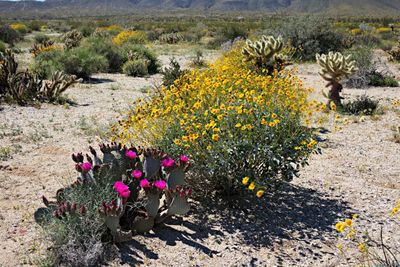Growing Wildflowers in the Desert
If you’re interested in growing wildflowers in the desert, or if you’d like to try your hand at xeriscaping with wildflowers, keep in mind that most desert wildflowers tolerate very warm days and won’t grow in cold temperatures. However, temperatures above 85 F. (29 C.) in late winter and early spring may scorch the seedlings. Desert wildflower plants are adaptable to poor, alkaline soil, but the soil must be well-drained. Loosen the top 1 inch (2.5 cm.) of soil before planting. Ensure the plants receive at least eight hours of sunlight per day. If the seeds are tiny, mix them with sand or old potting mix to help you distribute them evenly. Don’t cover seeds with more than 1/8 inch (3 mm.) of soil. Most desert wildflowers need a bit of rain throughout the winter in order to germinate, although too much moisture may rot the plants or wash the seeds away. Plant desert wildflower seeds directly in the garden in early spring when frost is still possible, or before the first hard freeze in fall. Once established, these wildflowers require minimal watering. The plants aren’t heavy feeders and no fertilizer is needed. Most desert wildflowers self-seed readily. Some, such as Blackfoot daisy and California poppy, are perennial. Remove wilted flowers to extend the blooming season.
Popular Wildflowers for Desert Climates
California poppy Arizona poppy Blackfoot daisy Scarlet or red flax Desert plumbago Devil’s claw Blanket flower Desert lupine Arroyo lupine Desert marigold Evening primrose Mexican hat Penstemon
